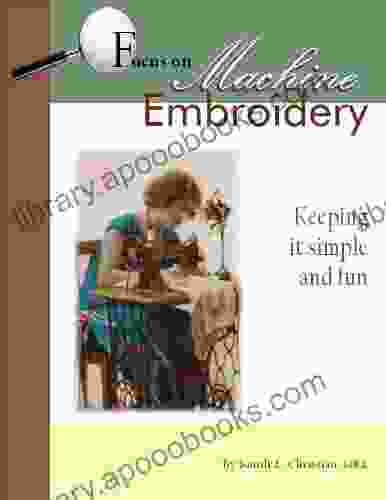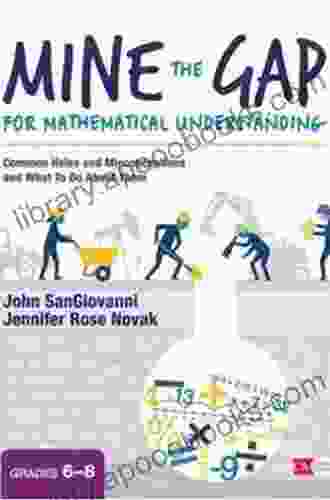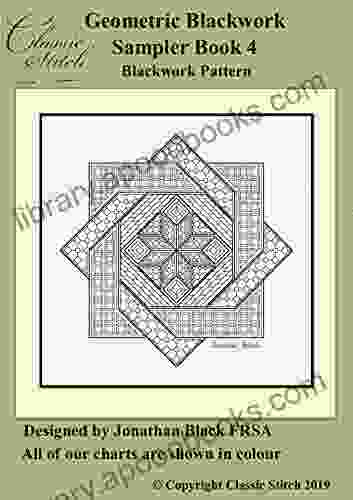Common Holes and Misconceptions in Mathematics: Uncovering the Root Causes and Effective Remedies

Mathematics, a subject often shrouded in perceived complexity, presents numerous challenges to students and educators alike. One significant obstacle lies in the existence of common holes and misconceptions that can hinder the development of mathematical understanding. These gaps and erroneous beliefs can stem from various factors, including insufficient instruction, misunderstandings, or oversimplifications.
4.7 out of 5
| Language | : | English |
| File size | : | 17806 KB |
| Screen Reader | : | Supported |
| Print length | : | 384 pages |
In this comprehensive article, we delve into the realm of mathematics to explore the most prevalent holes and misconceptions that often impede progress. We will shed light on the root causes of these knowledge gaps and provide actionable strategies for addressing them effectively. By uncovering these pitfalls and equipping educators and students with the necessary tools, we aim to foster a deeper understanding of mathematical concepts and promote mathematical success.
Unveiling the Most Common Holes in Mathematical Understanding
Before addressing misconceptions, it is crucial to identify the common holes that exist in students' mathematical understanding. These gaps often arise when certain concepts are not fully grasped or when connections between concepts are not adequately established. Some of the most frequent holes include:
- Lack of conceptual understanding: Students may memorize procedures or formulas without comprehending the underlying concepts and principles, leading to difficulties in applying knowledge in different contexts.
- Incomplete knowledge of prerequisites: Building upon prior knowledge is essential in mathematics. Holes in foundational concepts can create barriers to understanding more advanced topics.
- Limited problem-solving skills: Students may struggle to apply mathematical knowledge to real-world situations or solve non-routine problems.
- Difficulty in representing mathematical concepts: Translating mathematical ideas into different representations, such as diagrams, equations, or graphs, can be challenging for some students.
- Misinterpretation of mathematical language: The technical language used in mathematics can lead to confusion and hinder comprehension.
Unveiling the Most Common Mathematical Misconceptions
In addition to holes in understanding, misconceptions are another significant obstacle in mathematics. Misconceptions arise when students develop incorrect or incomplete ideas about mathematical concepts. These erroneous beliefs can be persistent and difficult to change. Some of the most common misconceptions include:
- Misconception about the equal sign (=): Students may view the equal sign as indicating that the values on both sides are always the same, rather than as a symbol of balance.
- Misconception about negative numbers: Students may incorrectly assume that negative numbers are less than zero or that they can be ignored when performing operations.
- Misconception about fractions: Students may struggle to understand the concept of fractions as parts of a whole or equivalent representations.
- Misconception about decimals: Students may misinterpret decimals as whole numbers or confuse their placement value.
- Misconception about geometry: Students may hold incorrect beliefs about the properties of shapes or the relationships between angles.
Bridging the Gaps: Addressing Holes and Misconceptions
Addressing mathematical holes and misconceptions requires a multifaceted approach. Here are some effective strategies:
- Identify and diagnose specific holes and misconceptions: Use formative assessments and observations to determine the specific areas where students are struggling.
- Provide explicit instruction and clear explanations: Fill in knowledge gaps by providing clear and systematic instruction, ensuring that students grasp the underlying concepts.
- Promote conceptual understanding: Focus on developing students' understanding of mathematical concepts rather than rote memorization.
- Use multiple representations: Present mathematical concepts in different ways (e.g., diagrams, graphs, equations) to enhance understanding.
- Facilitate problem-solving activities: Encourage students to engage in problem-solving tasks that require them to apply their knowledge to real-world situations.
- Encourage student discourse and collaboration: Provide opportunities for students to discuss mathematical concepts and misconceptions with their peers.
- Use technology as a tool: Utilize technology to provide interactive simulations, visualizations, and feedback that can help students address their misconceptions.
The Role of Corwin Mathematics in Addressing Mathematical Holes and Misconceptions
Corwin Mathematics, a leading provider of professional development resources for mathematics educators, offers a comprehensive range of resources to assist in addressing mathematical holes and misconceptions. Our books, workshops, and online courses provide:
- In-depth analysis of common mathematical holes and misconceptions
- Evidence-based strategies for addressing these challenges
- Practical tools and activities for implementation
- Opportunities for professional learning and collaboration
Overcoming mathematical holes and misconceptions is crucial for fostering a deeper understanding of mathematical concepts and improving student outcomes. By identifying the root causes, implementing effective strategies, and utilizing resources such as Corwin Mathematics, educators can empower students to overcome these challenges, develop a strong foundation in mathematics, and achieve mathematical success.
4.7 out of 5
| Language | : | English |
| File size | : | 17806 KB |
| Screen Reader | : | Supported |
| Print length | : | 384 pages |
Do you want to contribute by writing guest posts on this blog?
Please contact us and send us a resume of previous articles that you have written.
 Book
Book Novel
Novel Page
Page Chapter
Chapter Text
Text Story
Story Genre
Genre Reader
Reader Library
Library Paperback
Paperback E-book
E-book Magazine
Magazine Newspaper
Newspaper Paragraph
Paragraph Sentence
Sentence Bookmark
Bookmark Shelf
Shelf Glossary
Glossary Bibliography
Bibliography Foreword
Foreword Preface
Preface Synopsis
Synopsis Annotation
Annotation Footnote
Footnote Manuscript
Manuscript Scroll
Scroll Codex
Codex Tome
Tome Bestseller
Bestseller Classics
Classics Library card
Library card Narrative
Narrative Biography
Biography Autobiography
Autobiography Memoir
Memoir Reference
Reference Encyclopedia
Encyclopedia Richard L Crocker
Richard L Crocker Scott Straus
Scott Straus Patricia Evans
Patricia Evans Jonathan Yanez
Jonathan Yanez Fern Michaels
Fern Michaels Judith R Brown
Judith R Brown Joyce S Pickering
Joyce S Pickering Mary Ruefle
Mary Ruefle Kathryn Eastburn
Kathryn Eastburn Peter C Vermilyea
Peter C Vermilyea Listastik
Listastik Jonathan Fox
Jonathan Fox Joseph Mark Brewer
Joseph Mark Brewer Padraic Colum
Padraic Colum Riley Black
Riley Black John Spreincer Mckellyanne Huckamucci
John Spreincer Mckellyanne Huckamucci Larry Sloman
Larry Sloman Kevin Ure
Kevin Ure Joy Manning
Joy Manning Jordan Rivet
Jordan Rivet
Light bulbAdvertise smarter! Our strategic ad space ensures maximum exposure. Reserve your spot today!

 Joseph ConradDiscover the Significance of the 1763 Treaty of Paris: A Comprehensive Guide
Joseph ConradDiscover the Significance of the 1763 Treaty of Paris: A Comprehensive Guide Ethan GrayFollow ·11.6k
Ethan GrayFollow ·11.6k Carl WalkerFollow ·14.9k
Carl WalkerFollow ·14.9k Roger TurnerFollow ·2.1k
Roger TurnerFollow ·2.1k Chuck MitchellFollow ·19.7k
Chuck MitchellFollow ·19.7k Nick TurnerFollow ·15.7k
Nick TurnerFollow ·15.7k Mario Vargas LlosaFollow ·18.9k
Mario Vargas LlosaFollow ·18.9k Charlie ScottFollow ·18.7k
Charlie ScottFollow ·18.7k Douglas AdamsFollow ·15.5k
Douglas AdamsFollow ·15.5k

 Tyler Nelson
Tyler NelsonHer Dragon to Slay: Embark on an Epic Journey of...
In a realm where shadows dance and legends...

 Zachary Cox
Zachary Cox101 Best Marine Invertebrates: The Adventurous Aquarist's...
Unveiling the Enchanting Realm...

 William Wordsworth
William WordsworthHer Dragon Fire: Unleash the Power Within Your Soul
Embark on an...

 William Powell
William PowellUnveiling the Enchanting World of Machine Embroidery with...
Embroidery, an ancient art form that has...

 Will Ward
Will WardGolden Fire Clan Dragon Guard: A Journey into a Realm of...
Prepare to be...

 Gustavo Cox
Gustavo CoxProject Ideas to Elevate Your Hobbies and Flourish Your...
<p>Welcome to the ultimate guide to...
4.7 out of 5
| Language | : | English |
| File size | : | 17806 KB |
| Screen Reader | : | Supported |
| Print length | : | 384 pages |










